
An impressed duty stamp is a form of revenue stamp created by impressing (embossing) a stamp onto a document using a metal die to show that the required duty (tax) had been paid. The stamps have been used to collect a wide variety of taxes and duties, including stamp duty and duties on alcohol, financial transactions, receipts, cheques and court fees. Usage has been worldwide but particularly heavy in the United Kingdom and British Commonwealth.

Revenue stamps of Malta were first issued in 1899, when the islands were a British colony. From that year to 1912, all revenue issues were postage stamps overprinted accordingly, that was either done locally or by De La Rue in London. Postage stamps also became valid for fiscal use in 1913, so no new revenues were issued until 1926–30, when a series of key type stamps depicting King George V were issued. These exist unappropriated for use as general-duty revenues, or with additional inscriptions indicating a specific use; Applications, Contracts, Registers or Stocks & Shares. The only other revenues after this series were £1 stamps depicting George VI and Elizabeth II. Postage stamps remained valid for fiscal use until at least the 1980s.

Revenue stamps of the United Kingdom refer to the various revenue or fiscal stamps, whether adhesive, directly embossed or otherwise, which were issued by and used in the Kingdom of England, the Kingdom of Great Britain, the United Kingdom of Great Britain and Ireland and the United Kingdom of Great Britain and Northern Ireland, from the late 17th century to the present day.
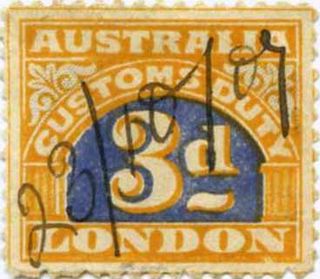
Australia issued revenue stamps from 1907 to 1994. There were various types for different taxes. In addition to Commonwealth issues, the states of New South Wales, Queensland, South Australia, Tasmania, Victoria and Western Australia as well as the territories Australian Capital Territory, North Australia and Northern Territory also had their own stamps.
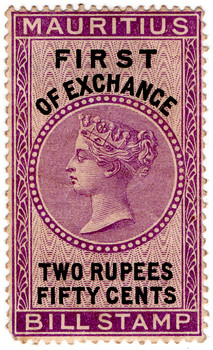
Mauritius issued revenue stamps from 1 March 1869 to 1904. There were various types of fiscal stamps for different uses.

The Australian state of Victoria issued revenue stamps from 1870 to around 2000. There were various types for different taxes.
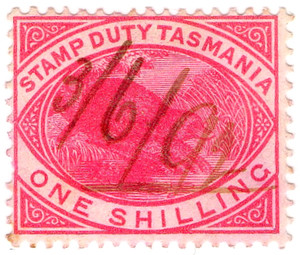
The Australian state of Tasmania issued adhesive revenue stamps from 1863 to 1998, although impressed stamps had appeared briefly in the 1820s. There were general revenue and stamp duty issues, as well as a number of specific issues for various taxes.

The Australian state of South Australia issued revenue stamps from 1894 to 2003. There were various types for different taxes.

The Australian state of Queensland issued revenue stamps from 1866 to 1988. There were various types for different taxes.
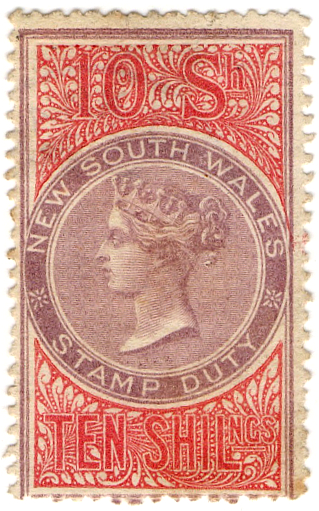
The Australian state of New South Wales issued revenue stamps from 1865 to 1998. There were various types for different taxes.
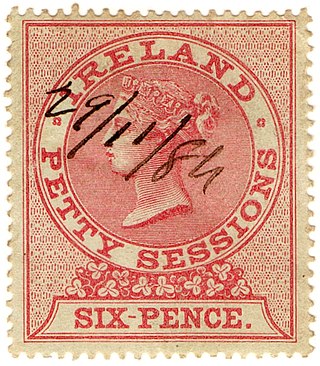
Revenue stamps of Ireland refer to the various revenue or fiscal stamps, whether adhesive, directly embossed or otherwise, which have been used on the island of Ireland since 1774. These include issues by the Kingdom of Ireland, issues by the United Kingdom specifically for use in Ireland or briefly Southern Ireland, and issues of an independent southern Ireland since 1922. Revenue stamps of Northern Ireland were also issued from 1921 to the 1980s, but they are not covered in this article.

The island of Cyprus first issued revenue stamps in 1878 and continues to do so to this day. The Turkish Republic of Northern Cyprus also issues its own revenue stamps.
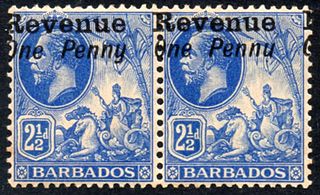
The island of Barbados first issued revenue stamps in 1916. There were various types of fiscal stamps for different taxes.

The South African Republic (ZAR), later known as Transvaal issued revenue stamps from 1875 to around 1950. There were a number of different stamps for several taxes.
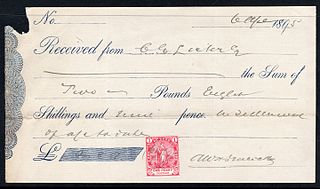
Cape of Good Hope issued revenue stamps from 1864 to 1961. There were a number of different stamps for several taxes.
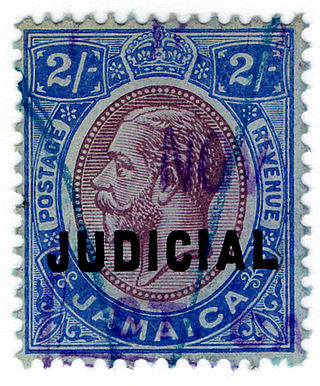
Revenue stamps of Jamaica were first issued in 1855. There were various types of fiscal stamps for different taxes.

Uganda issued revenue stamps from around 1896 to the 1990s. There were numerous types of revenue stamps for a variety of taxes and fees.
Revenue stamps of Fiji were first issued in 1871 or 1872, when the Fiji islands were an independent kingdom. The first revenue stamps consisted of postage stamps overprinted with the letter D.
Revenue stamps of Seychelles were first issued in 1893, when the islands were a dependency of the British Crown Colony of Mauritius. The first stamps were Mauritius Internal Revenue stamps depicting Queen Victoria overprinted for use in Seychelles, and Bill stamps were also similarly overprinted. Postage stamps depicting Victoria or Edward VII were overprinted for fiscal use at various points between 1894 and 1904, while surcharges on Bill stamps were made in around 1897–98.
Few revenue stamps of Nigeria and its predecessor states have been issued, since most of the time dual-purpose postage and revenue stamps were used for fiscal purposes. The first revenue-only stamps were consular stamps of the Niger Coast Protectorate and the Southern Nigeria Protectorate, which were created by overprinting postage stamps in 1898 and 1902 respectively. The Northern Nigeria Protectorate did not issue any specific revenue stamps, but a £25 stamp of 1904 could not be used for postal purposes due to its extremely high face value.



















